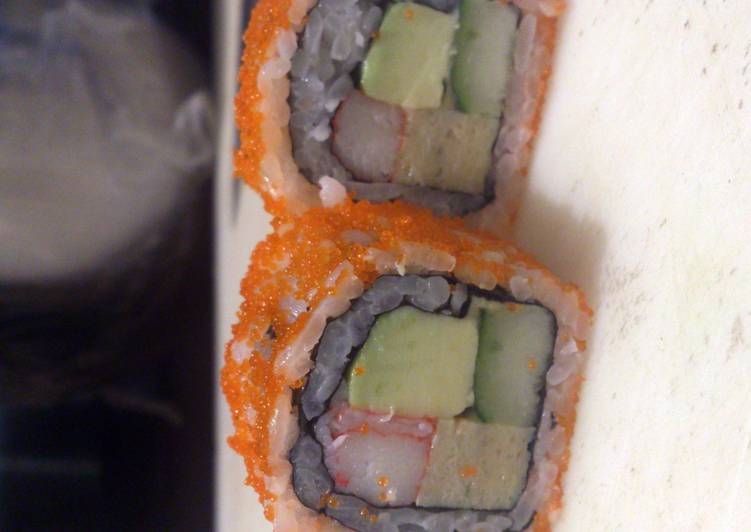California Maki. California Maki was born, without raw fish so it uses real snow crab legs (later changed to surimi) in addition to fruits and vegetables like mango, avocado and cucumber. Composed of fresh mango slivers, cucumber sticks, and imitation crab sticks, this California Maki recipe is so easy, just find the ingredients and you can. Do you love ordering California Maki sushi in restaurants?
 California Roll or California Maki is a sushi roll that is made inside out.
Crabstick, avocado, and cucumber are placed in the center of the nori while the flattened sushi rice with sesame seeds is on.
Filipino Style Recipe: California Maki is the most common type of sushi.
You can cook California Maki using 7 ingredients and 5 steps. Here is how you cook it.
California Roll or California Maki is a sushi roll that is made inside out.
Crabstick, avocado, and cucumber are placed in the center of the nori while the flattened sushi rice with sesame seeds is on.
Filipino Style Recipe: California Maki is the most common type of sushi.
You can cook California Maki using 7 ingredients and 5 steps. Here is how you cook it.
Ingredients of California Maki
- Prepare 1 small of sushi rice.
- You need 1 envelope of seaweed.
- It's 1 of japanese cucumber.
- You need 1 clove of avocado.
- Prepare 1 stick of crabmeat.
- You need 1 of tamagoyaki ( japanese sweetened egg ).
- You need 1/4 box of shrimp roe.
Sushi is generally made with either nori(seaweed sheets), rice and can be filled with any desire ingredients inside the roll. There's some debate over who invented the California, which several chefs in Los Angeles California claiming to be the inventor including Ichiro Mashita, and Ken. Affordable Authentic California Maki (Freshly Made). Sushi Restaurant in Quezon City, Philippines.
California Maki step by step
- use or create a half cut sheet of seaweed..
- apply 80gm of sushi rice onto the sheet.
- after that flip your seaweed roll,where the rice is supposely to be the outer part..
- then add the following ingredients,then use the bamboo roll to turn into a round shape..
- dip the completed sushi roll onto the shrimp roes..
Binebenta ko rin hehe California Maki. Tapos na ako magdeliver, natapon pa yung konting sabaw nung ulam sa thermos bag ko. The California Maki recipe out of our category Seaweed! Be the first to rate & review! California Maki Rolls. this link is to an external site that may or may not meet accessibility guidelines.